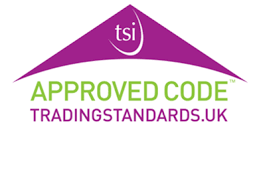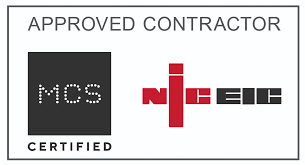St Andrews: 01334 850382
Glenrothes: 01592 654553
Email: info@rbgrant.co.uk
St Andrews: 01334 850382
Glenrothes: 01592 654553
Email: info@rbgrant.co.uk
Tolerable Standard Guidance: Satisfactory Fire Detection and Satisfactory Carbon Monoxide Detection.
16.1. A house meets the tolerable standard if it complies with the relevant requirements in relation to satisfactory smoke and heat alarms.
Introduction
16.2. The tolerable standard is amended by the Housing (Scotland) Act 1987 (Tolerable Standard) (Extension of Criterion) Order 2019 and now includes this new element covering smoke and heat alarms. For the first time, assessors will consider the presence, type and condition of smoke and heat alarms in a house when deciding if the house meets the tolerable standard. These criteria, which already formed part of the repairing standard, now apply to all houses.
16.3. This chapter of the guidance aims to provide the information and advice needed to carry out an assessment of the smoke and heat alarms in a house for the purposes of the tolerable standard. The methodology is based on the normal walkthrough survey used for other elements of the tolerable standard, with the potential for support from a qualified specialist.
Legislation
16.4. The tolerable standard was first defined in the Housing (Scotland) Act 1969 which was then repealed and replaced by the Housing (Scotland) Act 1987. The Housing (Scotland) Act 1987 (Tolerable Standard) (Extension of Criterion) Order 2019 introduced this new element. The introduction of smoke and heat alarms in the tolerable standard is in recognition of the danger fire poses to the occupants of a house, and is intended to reduce the risk of loss of life, injury and damage to property in the event of fire.
16.5. The revised tolerable standard includes criteria for ‘satisfactory equipment for detecting fire and giving warning in the event of fire or suspected fire’. This guidance defines what is ‘satisfactory’ by setting out the requirement for:
• one smoke alarm installed in the room most frequently used for general daytime living purposes (normally the living room/lounge); • one smoke alarm in every circulation space on each storey, such as hallways and landings; • one heat alarm installed in every kitchen; • all smoke and heat alarms to be ceiling mounted; and • all smoke and heat alarms to be interlinked.
16.6 Mains-operated alarms (with battery backup) are permitted, and tamper proof long-life lithium battery alarms (i.e. not PP3 type or user-replaceable) are also permitted. Alarms should be regularly maintained and tested in accordance with manufacturer’s instructions.
16.7. Smoke alarm: A fire detector that detects smoke as a primary indication of fire. It produces an audible and/or visible signal locally in a room or a home. Smoke alarms are usually housed in a small, round shaped plastic case, and ceiling mounted. Smoke alarms should conform to BS EN 14604. For more detailed information on smoke alarms, see BS 5839 Part 6.
16.8. Heat alarm: A fire detector that detects the presence of fire by monitoring the changes in temperature associated with combustion. It produces an audible and/or visible signal locally in a room or a home. Heat alarms should conform to BS 5446-2. For more detailed information on heat alarms, see BS 5839 Part 6. In a fire, heat alarms operate later than smoke alarms, so their use should be restricted to rooms in which smoke alarms would cause false alarms (e.g. kitchens).
16.9. Multi-sensor alarm: A fire detector that detects the presence of fire by monitoring more than one phenomenon of fire (e.g. smoke and heat). Multi-sensor alarms should conform to BS EN 54-29 or BS EN 14604.
16.10. Ceiling mounted: All smoke and heat alarms should be ceiling mounted, unless otherwise indicated as suitable for wall mounting in spaces of limited area (e.g. hallways) by the manufacturer.
16.11. Interlinked: Interconnected alarms which communicate with each other and form an integrated system of protection in the home, so that when one alarm detects a fire, all alarms operate simultaneously. Alarms can be interlinked via wires (hardwired) or wirelessly (by radio communication). Where adding to an existing hardwired system, care should be taken to ensure that all alarms are interlinked, with all alarms sounding when any one device is activated.
16.12. In some buildings, it may not be practical to fit fire and smoke alarms to this exact standard. There may be instances where the number of alarms specified would not be required to meet the standard, such as a kitchen/diner or open plan layout. Assessors should take account of the layout and design of the building, and any advice given by a competent person. Further information can be found in the Building Standards Domestic Technical Handbook.
16.13. Local authorities may use their statutory powers to require owners to carry out work on substandard housing. However, as is the case for other elements of the Tolerable Standard ( e.g. serious structural problems through to other failures such as insufficient loft insulation), it is expected that any intervention is proportionate, rational and reasonable. Local authorities are to consider the cost of any intervention alongside the cost of assisting owners to bring their property up to the minimum standard for satisfactory fire detection. As a general rule it is preferable that owners should carry out necessary works on a voluntary basis rather than as a result of enforcement action, with further information set out in Chapter 2 – local authority powers.
Recent cases in the sheriff court support the view that local authorities have to consider carefully which enforcement powers are appropriate to a failure in meeting the standard and careful investigation must be carried out as to the cause of the failure as well as engagement with the owners.
16.14. The next part of this chapter gives advice for assessors on making judgements on this element of the tolerable standard.
For specific landlord smoke alarms see here










